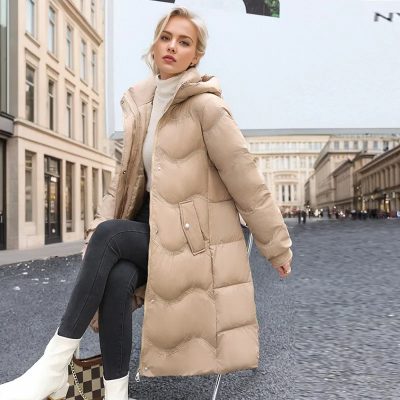Introduction: Women’s puffer jackets are not only stylish but also engineered to withstand the harshest weather conditions. From freezing temperatures to biting winds and snowstorms, these jackets are designed to keep you warm, dry, and comfortable. In this article, we’ll delve into the technical aspects of women’s puffer jackets and how they are engineered for optimal performance.
- Insulation: The cornerstone of any puffer jacket is its insulation, which traps body heat and provides warmth in cold weather. Women’s puffer jackets typically feature either down or synthetic insulation. Down insulation, derived from the soft undercoating of waterfowl, offers excellent warmth-to-weight ratio and compressibility. Synthetic insulation, made from polyester fibers, retains its insulating properties even when wet and is hypoallergenic.
- Fill Power: Fill power measures the quality and loftiness of down insulation. Higher fill power indicates larger and more resilient down clusters, resulting in better insulation performance. Women’s puffer jackets with higher fill power are lighter, more compressible, and offer superior warmth.
- Shell Material: The shell material of a puffer jacket plays a crucial role in protecting against wind, rain, and snow. Women’s puffer jackets often feature water-resistant or waterproof fabrics such as nylon or polyester. These materials are treated with a durable water repellent (DWR) finish to prevent moisture from seeping through the jacket.
- Baffles and Stitching: Baffles are the compartments within a puffer jacket that hold insulation in place. Stitching or quilting prevents insulation from shifting and maintains consistent warmth throughout the jacket. Different baffling designs, such as box baffles or sewn-through channels, can affect insulation distribution and overall warmth.
- Features: Women’s puffer jackets are equipped with a range of features designed to enhance performance and functionality. Adjustable hoods, cuffs, and hem allow for a customizable fit and seal out cold air. Zippered pockets provide secure storage for essentials, while interior media pockets keep electronics safe and accessible. Some jackets also feature ventilation zippers or pit zips for temperature regulation during high-intensity activities.
- Packability: Packability is a key consideration for women’s puffer jackets, especially for outdoor enthusiasts and travelers. Jackets with compressible insulation and lightweight shell materials can be easily packed into a backpack or suitcase without taking up too much space. Packable puffer jackets are ideal for layering or stowing away when not in use.
Conclusion: Women’s puffer jackets are engineered with meticulous attention to detail to provide optimal performance in challenging weather conditions. From insulation and shell materials to baffles, stitching, and features, every aspect of these jackets is carefully designed to maximize warmth, comfort, and durability. Whether you’re braving the elements on a winter hike or navigating city streets on a cold day, a high-performance puffer jacket is your ultimate ally against the weather.







